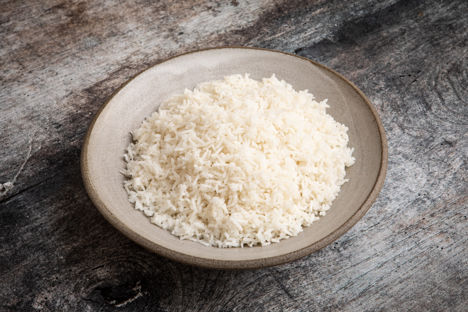How do I store leftover rice?
The proper storage of leftover rice is paramount for both taste and safety. Quickly cool any remaining portions by spreading them thinly on a clean tray over ice. Once cooled, transfer to an airtight container and refrigerate below 8°C for up to three days. Alternatively, freeze in a freezer-safe container for up to three months.
How do I reheat and cook with leftover rice?
When reheating refrigerated or frozen leftover rice, do so only once and ensure it reaches an internal temperature of 74°C or higher. Frozen rice can be added directly to simmering stews or soups, or thawed in the microwave or stovetop for convenience.
Can I eat leftover rice cold?
Leftover rice can be served cold, for example in salads, but only if cooled quickly and refrigerated correctly.
What are the different types of rice, and do I need to treat them differently?
Rice comes in a variety of different forms, each with unique characteristics. For example, brown rice is celebrated for its nutty flavour and high nutritional value due to its intact bran layer. This means it is a popular choice for health-conscious recipes. Wild rice, indigenous to North America, boasts a distinct earthy taste and is frequently used in salads, stuffings, or simply served as a side.
Basmati rice is known for its fragrant aroma and long grains, a favourite in Indian and Middle Eastern cuisine. Arborio and risotto rice varieties have a high starch content and short grain shape, which creates the creamy texture essential for Italian risottos and Spanish paellas. Sushi rice is another short grain variety, again due to the high starch content creating the perfect sticky consistency for crafting sushi rolls. Regardless of the grain type, leftover cooked rice can be stored and reheated as described above, then used again in various dishes.
What recipes typically use leftover rice?
Uses for leftover rice are found in cuisines globally. Calas, for example, are a type of rice fritter originating in New Orleans, made using pre-cooked rice. They can be savoury, filled with minced crab and spring onion, or made sweet with a dusting of sugar. Rice pudding is another classic recipe that lends itself to cooked rice - the sweet and creamy rice base can then take on a range of flavours from cinnamon and raisins to coconut or chocolate. Finding ways to use leftover rice is a great way to experiment more while cooking and reduce food waste, contributing to an overall more sustainable kitchen.
White Rice Recipe
Metric
Imperial
- 200g of white rice
- 365ml of water
Transfer the rice into a bowl, and rinse with cold water three to five times.
Place the rinsed rice and water into a pot, then over a medium-high heat bring to a boil.
Once the water boils, cover the pot with a lid and turn the heat down to low. Leave to cook for 15 minutes undisturbed, or until the water is all absorbed and the rice is tender.
Remove the lid from the pot, and use a fork to gently fluff up the rice. Season with salt if desired, then serve.
How do you make egg fried rice?
Egg fried rice is a timeless dish that originated in ancient China; evolving over centuries, it has become a beloved staple. Its popularity from bustling street stalls to high-end restaurants can be attributed to the combination of simple ingredients and adaptability. To recreate the dish at home, start with leftover rice, ideally a day old. Heat a wok or large skillet with a splash of vegetable oil and sauté finely chopped onions until golden. Add in chopped vegetables of your choice, then after a couple of minutes crack in a few eggs. Let them cook until they begin to set, then stir them to scramble them before adding in your cooked rice. Break up any rice clumps, then toss the rice with soy sauce, sesame oil, and a pinch of white pepper, before garnishing with chopped spring onions.
Are there benefits to cooking with leftover rice?
The chilled and slightly firm texture of leftover rice makes it an ideal base for meals the next day. For dishes like the Italian staple Arancini, where leftover risotto rice is shaped into balls and filled with ragú or mozzarella before frying, the slightly drier texture of the grains once refrigerated allows them to bind into seamlessly shaped balls, creating a sturdy exterior and a tender, flavourful interior. The drier nature of the leftover rice also increases the amount of flavour that is absorbed during cooking, and reduces the likelihood of the grains becoming mushy when heated.
The slightly firmer, drier texture of cooked rice increases the amount of flavour that the grain can absorb, and reduces the chances of the rice turning stodgy as it is reheated. Whether you are looking for something warm and comforting like egg fried rice, or something sweet like rice pudding, our archives will have something to inspire you.
Get in touch
Please sign in or register to send a comment to Great British Chefs.



